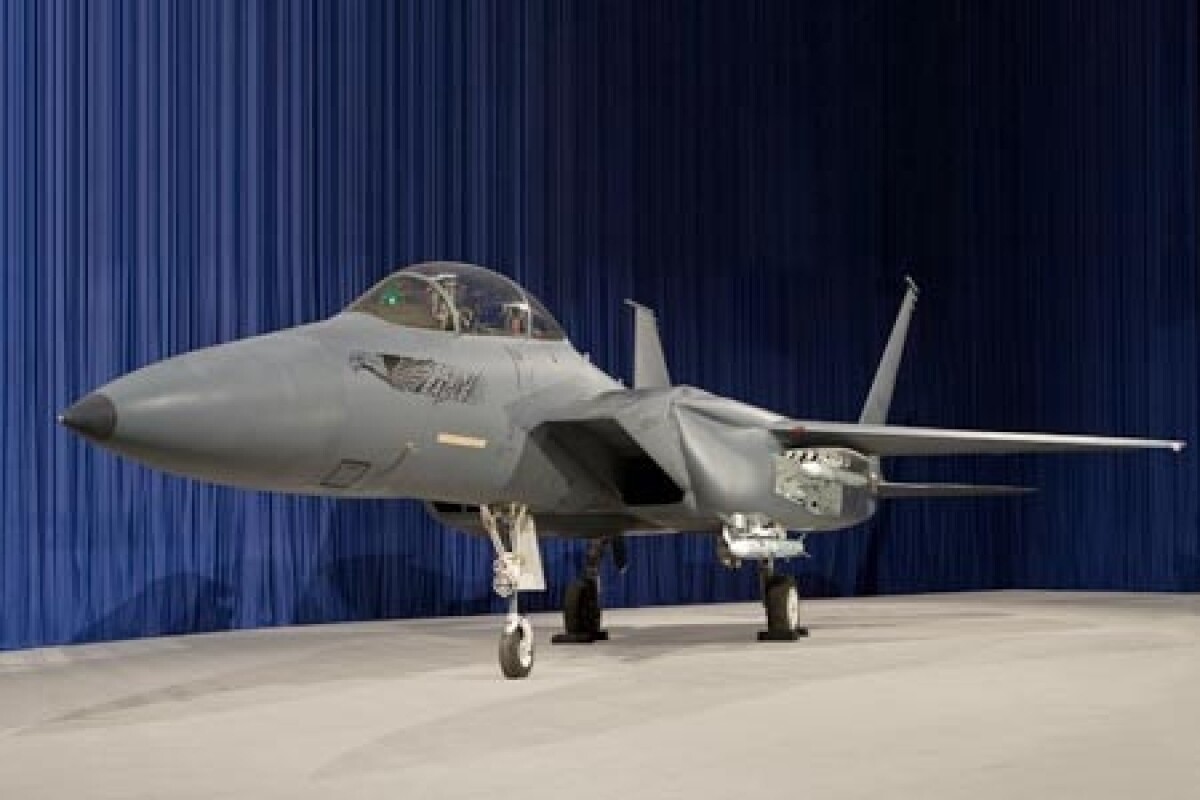March 18, 2009 The Boeing Company has unveiled the F-15 Silent Eagle (F-15SE), a new F-15 configuration designed with a range of improvements over the previous F-15 variants including improved stealth coatings, redesigned conformal fuel tanks, a canted vertical tail to improve aerodynamic efficiency and much more. The prototype will be ready for its first test flight in early 2010.
The F-15SE
The F-15SE is a new configuration from the stables of the well known F-15E Strike Eagle, a 1980s American all-weather strike fighter, designed for long-range action against targets deep behind enemy lines. The Strike Eagle proved its worth in Desert Storm carrying out deep strikes against high valued targets, combat air patrols and providing close air support for coalition troops.
"The F-15 Silent Eagle is designed to meet our international customers' anticipated need for cost-effective stealth technologies, as well as for large and diverse weapons payloads," said Mark Bass, F-15 Program vice president for Boeing. "The innovative Silent Eagle is a balanced, affordable approach designed to meet future survivability needs."
Improvements over previous F-15 variants
Improvements in stealth over previous F-15 variants include coatings and treatments on the aircraft and there has also been a redesign of the conformal fuel tanks (CFTs) that allow for internal weapons carriage, says Boeing. Depending on the specific mission, the customer can use the CFTs that are designed for internal carriage or change back to the traditional CFTs for optimum fuel capacity and external weapons carriage.
The Silent Eagle will be able to internally carry air-to-air missiles such as the AIM-9 and AIM-120 and air-to-ground weapons such as the Joint Direct Attack Munition (JDAM) and Small Diameter Bomb (SDB). The standard weapons load used on current versions of the F-15 is available with the traditional CFTs installed.
Boeing states that the aircraft's canted vertical tails improve aerodynamic efficiency, provide lift, and reduce airframe weight. The go onto say that another aerodynamic improvement is the Digital Flight Control System, which improves the aircraft's reliability and reduces airframe weight. Survivability improvements include a BAES Digital Electronic Warfare System (DEWS) working in concert with the Raytheon Advanced Electronic Scanning Array (AESA) radar.
Boeing has completed a conceptual prototype of the CFT internal-carriage concept, and plans to flight-test a prototype by the first quarter of 2010, including a live missile launch. The design, development, and test of this internal carriage system are available as a collaborative project with an international aerospace partner.
David Greig





